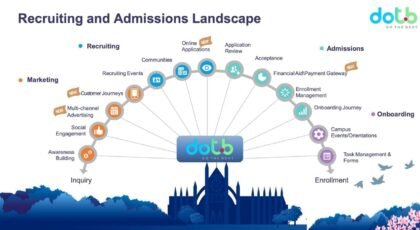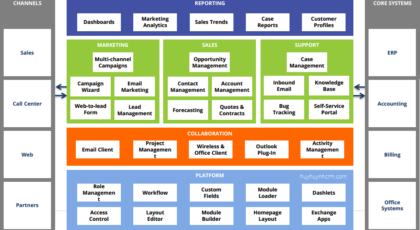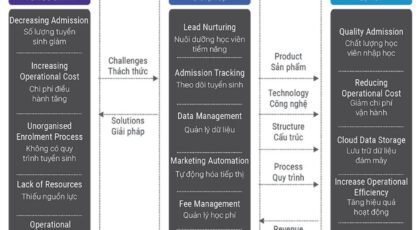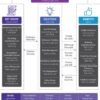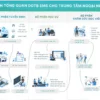Profitability and Sustainability
In today’s business landscape, sustainability and profitability are crucial for enterprises in every industry. The Education Tech sector, in particular, has experienced rapid growth, especially after the COVID-19 pandemic. In 2020 alone, global EdTech startups raised over $11 billion, indicating the sector’s potential for profitability. However, one key factor that affects profitability is the Customer Acquisition Cost (CAC). EdTech companies often face high CAC due to intense competition and the need to acquire a diverse customer base.
In this blog post by DOTB , will address the growing concern of increasing CAC in the Education industry and present effective strategies to reduce it. By implementing these strategies, Education companies can not only lower their acquisition costs but also enhance revenue generation. Join us as we explore practical ways to reduce CAC and unlock the path to increased profitability in the Education sector.
What is CAC in Education?
In the Education, CAC refers to the total cost of attracting and converting new users to a company’s educational offerings. This includes expenses associated with marketing, advertising, and other efforts aimed at drawing in and signing up new learners, be it individual students or institutions. Education companies tend to have higher CAC compared to other industries due to the unique challenges of reaching a diverse customer base, which can involve both individual learners and educational institutions with their own decision-making processes.

Evaluating Your CAC
Gauging the Right CAC: The Customer Lifetime Value (CLTV) Benchmark

Across industries, a crucial indicator of efficient customer acquisition is the Customer Acquisition Cost (CAC) to Customer Lifetime Value (CLTV) ratio. CLTV represents the total revenue a customer is expected to generate throughout their association with your company. Ideally, this ratio should be around 1:3, meaning your CAC should not exceed one-third of your CLTV. By analyzing this ratio, you can assess whether your customer acquisition costs are aligned with the potential long-term value of your customers.

In the Education sector, where students often have a longer CLTV due to potential upselling and cross-selling opportunities, strategically determining the CAC becomes even more critical. A lower CAC compared to a high CLTV indicates a healthy customer acquisition strategy.
Cost Optimization: Effective Ways to Reduce CAC in Educational Institutions
Cost optimization is a crucial aspect for all businesses, including educational institutions. However, simply reducing costs isn’t enough. A strategic approach is necessary to achieve sustainable cost optimization. Here are several effective strategies educational institutions can implement to lower their Customer Acquisition Cost (CAC):
- Targeted Lead Acquisition: Identifying and focusing on the most promising leads allows institutions to minimize the number of leads needed to achieve enrollment goals, directly impacting CAC reduction.
- Enhanced Lead Generation: Optimizing lead generation efforts generates more high-quality leads at a lower cost, further contributing to CAC reduction. This might involve utilizing cost-effective marketing channels like social media, or implementing lead scoring to prioritize the most promising potential students.
- Streamlined Enrollment Process: By streamlining the enrollment process, institutions can minimize the time and resources required to secure new students, leading to lower CAC. This could involve implementing enrollment management software or utilizing automation tools to streamline administrative tasks.
- Prioritizing Student Retention: Student retention plays a crucial role in reducing CAC by minimizing the need for constant new student acquisition. This can be achieved by providing exceptional student support services, offering engaging programs, and fostering positive campus experiences.
- Channel Optimization: Analyzing student demographics and engagement within your data allows you to identify the channels that generate the most interest. By strategically optimizing your investment in these preferred channels, you can enhance engagement with potential students and move away from a less effective “spray-and-pray” approach.
- Shorter Enrollment Cycles: Educational institutions can benefit from shorter enrollment cycles, leading to cost savings and reduced CAC. Instead of investing heavily in lengthy application and enrollment processes, a strategic approach focused on efficient student onboarding is crucial. Additionally, longer enrollment cycles often carry a higher risk of student drop-off.
By implementing these strategic measures, educational institutions can effectively reduce their CAC, improve their return on investment, and achieve sustainable growth within the competitive education landscape.

The Importance of Reducing CAC in Educational Institutions
Several compelling reasons highlight the importance of reducing Customer Acquisition Cost (CAC) for educational institutions:
- Cost-Effectiveness: Lower CAC translates to acquiring new students at a lower cost, directly impacting the institution’s overall profitability.
- Increased ROI: By reducing CAC, institutions can generate a higher return on investment (ROI) from their marketing and recruitment efforts.
- Scalability: Lower CAC allows institutions to acquire new students more cost-effectively, facilitating easier business scaling and expansion.
- Financial Stability: Reduced CAC contributes to financial stability by minimizing the risk of financial losses. Acquiring students at a lower cost helps maintain a healthy balance between acquisition costs and the revenue generated by students.
- Competitive Advantage: Lower CAC can provide educational institutions with a competitive edge. This allows them to outspend competitors on marketing and promotion or offer more competitive pricing, potentially attracting a larger student base.
- Long-Term Success: Reducing CAC is a key driver for long-term institutional success. It enables the acquisition and retention of a sustainable student body, ensuring the institution’s continued growth and prosperity.
How a CRM Helps Educational Institutions Reduce CAC
A Customer Relationship Management (CRM) system plays a significant role in helping educational institutions reduce their Customer Acquisition Cost (CAC) in several ways:
- Improved Lead Management: A CRM provides a centralized database for managing leads and student information. This allows institutions to identify and prioritize the most promising leads, ultimately contributing to CAC reduction.

- Streamlined Enrollment Process: By automating repetitive tasks like data entry, lead tracking, and communication with potential students, a CRM streamlines the enrollment process. This reduces the time and resources required to secure new students, leading to lower CAC.

- Lead Nurturing: A CRM facilitates lead nurturing by tracking student engagement and enabling personalized communication based on their interests and needs. This leads to improved conversion rates and reduced CAC.

- Increased Student Retention: A CRM helps manage a centralized database of student information, enabling institutions to provide exceptional student support services and offer programs and services that keep students engaged and satisfied, ultimately increasing student retention and reducing the need for constant new student acquisition.
- Improved Analytics: CRMs empower institutions to track and analyze student data, allowing them to identify trends and patterns and make data-driven decisions. This optimization of lead generation and enrollment efforts directly contributes to lower CAC.
- Integration: Integration with other tools like marketing automation, email marketing, and analytics software provides a more holistic view of the student journey. This comprehensive understanding allows institutions to optimize their efforts and further reduce CAC.
Final Remarks

Overall, a CRM can significantly benefit educational institutions by:
- Enhanced Lead Management: Streamlining lead management through a centralized database allows institutions to identify and prioritize the most promising leads, ultimately reducing CAC.
- Optimized Enrollment Process: Automating repetitive tasks within the enrollment process through a CRM reduces the time and resources required to secure new students, leading to lower CAC.
- Improved Student Retention: A CRM facilitates the management of a centralized student information database, enabling institutions to provide exceptional student support services and offer engaging programs, leading to increased student retention and reduced CAC.
By implementing a CRM like DOTB , educational institutions can automate the entire student acquisition process, ultimately reducing CAC and prioritizing their financial well-being. The implementation of a unified online system for student information management, admissions tracking, and payment processing has demonstrably led to positive outcomes.
Ready to take the next step? Follow Huynh Duc Huy to learn more about how our DOTB solution can transform your educational institution.

